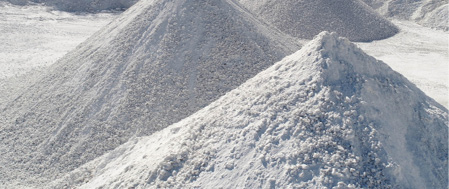The American Concrete Institute has expanded the scope of ACI 301-20, Specifications for Concrete Construction, to include internal curing, mineral fillers and recycled aggregates, along with evaluation requirements for elements cast with self-consolidating mixes and structures with defined modulus of elasticity requirements. Compliance details have been updated to align with ACI 318-19, Building Code Requirements for Structural Concrete—providing clarity on…
Read MoreTag: SCC
Processor grades calcium carbonate for fly ash substitution, SCC
Huber Carbonates launched a series of ground calcium carbonates earlier this year at The Precast Show in Denver, underscoring the powders’ capacity to replace fly ash; improve concrete mix workability; contribute to self-consolidating mix spread profile; and, maintain consistent white color without impacting fresh or hardened concrete properties.
Read MoreConferences underscore convergence of SCC, sustainability practice
More than 300 producers, design and engineering professionals, and academics from 30-plus countries who attended the International Concrete Sustainability Conference (ICSC) and 6th North American Conference on Design and Use of Self-Consolidating Concrete (SCC 2016) saw the green building revolution’s profound influence on the past two decades’ most consequential mix technology.
Read MoreConferences signal convergence of SCC, sustainability methods and practice
Sources: CP staff; National Ready Mixed Concrete Association, Silver Spring, Md.; Missouri University of Science & Technology, Rolla
More than 300 producers, design and engineering professionals, and academics from 30-plus countries who attended the International Concrete Sustainability Conference (ICSC) and 6th North American Conference on Design and Use of Self-Consolidating Concrete (SCC 2016) saw the green building revolution’s profound influence on the past two decades’ most consequential mix technology.
Read MoreConcrete, cement producers and allies reinforce SCC, Sustainability program
Source: CP staff
The co-located 6th North American Conference on Self-Consolidating Concrete (SCC2016) and 11th International Concrete Sustainability Conferences will draw some of the world’s leading authorities on high performance materials and sustainable practices. Key suppliers and service providers to North American concrete producers will contribute to a deep program, speakers and presentations including:
Read MoreDigital fabrication, nanotech, resilience, rheology presentations power SCC, Sustainability Conferences
Sources: National Ready Mixed Concrete Association, Silver Spring, Md.; Missouri University of Science & Technology, Rolla; CP staff
Organizers of the co-located 6th North American Conference on Self-Consolidating Concrete (SCC2016) and 11th International Concrete Sustainability Conference, May 15-18 in Arlington, Va., have scheduled nine keynote presentations across three plenary sessions. Headlining the program with keynote themes covering cutting edge technologies and concrete industry advances in sustainable production methods and practice are:
Read MoreOrganizers call for papers at co-located 2016 SCC, Sustainability Conferences
National Ready Mixed Concrete Association and Missouri University of Science & Technology invite abstracts for the 2016 Self-Consolidating Concrete Conference and the International Concrete Sustainability Conference (ICSC), May 15-18 in Washington, D.C. Engineers, architects, public works officials, material suppliers, researchers, academics, students, contractors and concrete industry professionals are encouraged to share their research, experiences and accomplishments in advancing SCC and sustainable concrete design, production and construction.
SCC, HPC demand help construction chemicals’ five-year outlook
Sources: Freedonia Group, Cleveland; CP staff
U.S. demand for construction chemicals used in on-site applications is projected to grow 8.2 percent per year through 2018 to $12.1 billion. Gains will be primarily driven by double-digit increases in building construction expenditures, owing to healthy economic growth and an improved consumer financial outlook. Increased economic activity and greater government investment in the aging infrastructure will also support construction chemical use in nonbuilding applications.
Read More

